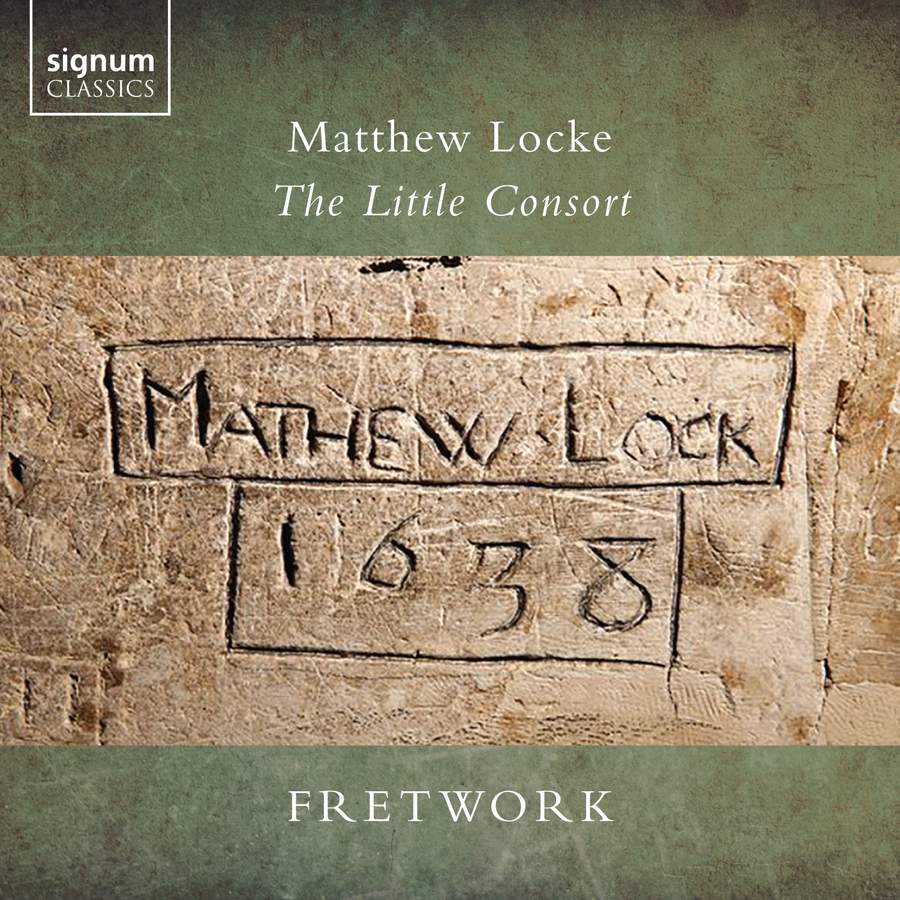LOCKE The Little Consort
View record and artist detailsRecord and Artist Details
Genre:
Chamber
Label: Signum Classics
Magazine Review Date: 01/2023
Media Format: CD or Download
Media Runtime: 68
Mastering:
DDD
Catalogue Number: SIGCD728

Tracks:
| Composition | Artist Credit |
|---|---|
| Little Consort: 10 Suites |
Matthew Locke, Composer
Fretwork Sergio Bucheli, Theorbo Silas Wollston, Harpsichord |
Author: Mark Seow
An intriguing recording: on first playing, I found this album difficult to get into, an experience that felt as if it lasted much longer than its actual 67'32". Only with repeated listenings did it start to reveal its true – and beautiful – self. These ‘Pavans, Ayres, Corants and Sarabands’ by Matthew Locke are strange things indeed. When Locke’s Little Consort of Three Parts was published in London in 1656, very little viol consort music had been printed. Only Dowland (1604) and Gibbons (c1620) had published volumes exclusively devoted to the viol consort. The result, I feel, is a style that appears to not be quite settled. Yet it is this strangely shifting, uncanny edge to Locke’s music that is his trademark – and Fretwork here transform it into something beguiling.
There is one standout movement (though, of course, much to enjoy in the other 39 tracks). This is the Pavan that opens the Suite No 8 in A minor. It is like entering a different world: we leave behind the angular rhythms of previous suites for something smoulderingly languid. Fragranced in Frenchness, Locke creates a texture that seems to develop like an unfurling mythical creature. Sergio Bucheli’s gentle thrum, sometimes barely perceptible, is stunningly sketched, while Fretwork stretch notes to their mournful maximum. Ornaments are excellently offered to the ether. Alongside many movements that do not take themselves too seriously, in particular the snappy Sarabands, there is a gravitas to this Pavan that consistently stops me in my tracks. It has a depth that would be well channelled in some of the other performances that over-prioritise the gleaming treble. Most intriguing are the fleeting moments when Fretwork do not sound like a viol consort. Locke’s designation of the book as ‘for viols or violins’ acknowledges that the viol was soon to be usurped by the violin; here, Fretwork embody this historical juncture through a flexibility and agility of stroke.
Discover the world's largest classical music catalogue with Presto Music.

Gramophone Digital Club
- Digital Edition
- Digital Archive
- Reviews Database
- Full website access
From £8.75 / month
Subscribe
Gramophone Full Club
- Print Edition
- Digital Edition
- Digital Archive
- Reviews Database
- Full website access
From £11.00 / month
Subscribe
If you are a library, university or other organisation that would be interested in an institutional subscription to Gramophone please click here for further information.




